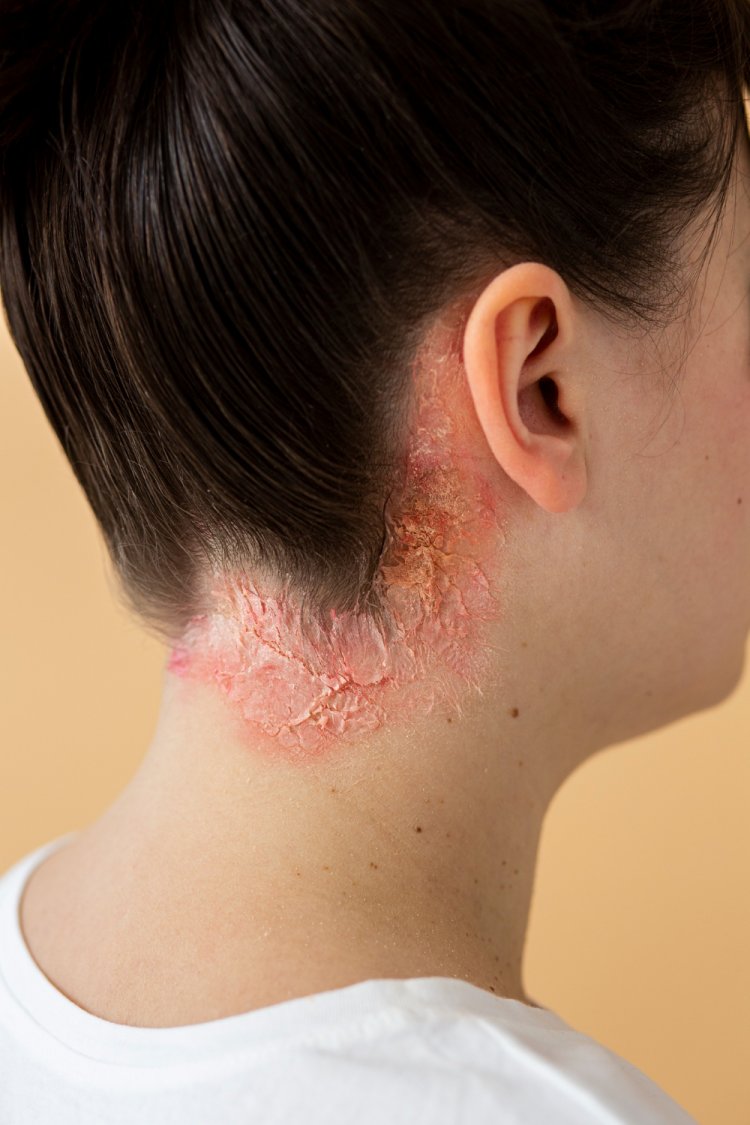Conquering Seborrheic Dermatitis: Strategies for Clearer, Healthier Skin
Seborrheic dermatitis stands as a multifaceted dermatological condition, characterized by chronic inflammation of the skin, often accompanied by erythema, pruritus, and desquamation. This intricate interplay of physiological and environmental factors underscores the need for a nuanced understanding of seborrheic dermatitis. In this comprehensive discourse, we embark on a journey to elucidate the etiology, clinical manifestations, diagnostic approaches, and therapeutic interventions associated with this enigmatic disorder.

Etiology and Pathogenesis
The pathogenesis of seborrheic dermatitis is rooted in a complex interplay of genetic predisposition, immunological dysregulation, and microbial colonization. Pivotal to its development is the proliferation of the lipophilic yeast Malassezia spp., particularly Malassezia furfur, which thrives in sebum-rich regions of the skin. Dysfunctions in the skin barrier, altered sebum composition, and aberrant immune responses contribute to the inflammatory cascade, perpetuating the cycle of seborrheic dermatitis.
Clinical Spectrum and Variants
Seborrheic dermatitis exhibits a diverse clinical spectrum, ranging from mild, localized involvement to severe, widespread manifestations. Commonly affected sites include the scalp, face, ears, chest, and intertriginous areas, where sebum production is elevated. Variants such as infantile seborrheic dermatitis (cradle cap) and seborrheic dermatitis in immunocompromised individuals present unique challenges in diagnosis and management, necessitating tailored approaches.
Diagnostic Paradigm
Diagnosing seborrheic dermatitis hinges on a comprehensive assessment encompassing clinical evaluation, dermatoscopic findings, and histopathological analysis if warranted. The hallmark features of seborrheic dermatitis include greasy, erythematous plaques with overlying scales, often distributed symmetrically in characteristic patterns. Differential diagnosis encompasses a broad spectrum of dermatological conditions, necessitating meticulous scrutiny to discern subtle nuances.
Therapeutic Armamentarium
Therapeutic interventions for seborrheic dermatitis are predicated on the principles of mitigating inflammation, reducing Malassezia colonization, and restoring skin barrier integrity. Topical agents, including antifungals (e.g., ketoconazole, ciclopirox), corticosteroids, calcineurin inhibitors, and keratolytics, form the cornerstone of treatment. Adjunctive modalities such as phototherapy, systemic antifungals, and dietary modifications may be employed in recalcitrant cases or specific clinical scenarios.
Holistic Management Strategies
In tandem with pharmacological interventions, holistic management strategies play a pivotal role in optimizing outcomes and enhancing patient well-being. Patient education regarding skincare practices, lifestyle modifications, and stress management techniques fosters empowerment and compliance. Embracing a personalized approach tailored to the patient's unique needs fosters a therapeutic alliance and fosters sustainable long-term outcomes.
Emerging Paradigms and Future Directions
The landscape of seborrheic dermatitis management continues to evolve, propelled by advancements in molecular biology, immunology, and therapeutics. Emerging modalities such as biologics targeting interleukin pathways, microbiome modulation, and novel delivery systems hold promise in revolutionizing treatment paradigms. Collaborative research endeavors and interdisciplinary collaborations are poised to unravel the intricacies of seborrheic dermatitis and pave the way for innovative therapeutic strategies.
Conclusion
Seborrheic dermatitis transcends the confines of a mere dermatological disorder, embodying a nexus of genetic predisposition, immunological aberrations, and environmental triggers. By embracing a holistic understanding of its etiopathogenesis, clinical nuances, and therapeutic modalities, clinicians can navigate the complexities of seborrheic dermatitis with precision and compassion. Empowering patients with knowledge, fostering therapeutic alliances, and embracing innovation are essential tenets in the quest to alleviate the burden of seborrheic dermatitis and enhance the quality of life for affected individuals.
Disclaimer
The information provided in this article is for educational purposes only and should not be considered medical advice. If you have any health concerns or are experiencing symptoms, it is important to consult with a healthcare professional, such as a doctor or clinic, for proper diagnosis and treatment. Always seek the advice of your doctor or other qualified health provider with any questions you may have regarding a medical condition. Do not disregard professional medical advice or delay in seeking it because of something you have read in this article.
Hashtags
#SeborrheicDermatitis #SkinCare #Dermatology #Health #MedicalAdvice #PatientCare #HolisticHealth #InnovativeTherapies #Inflammation #Malassezia
What's Your Reaction?





















